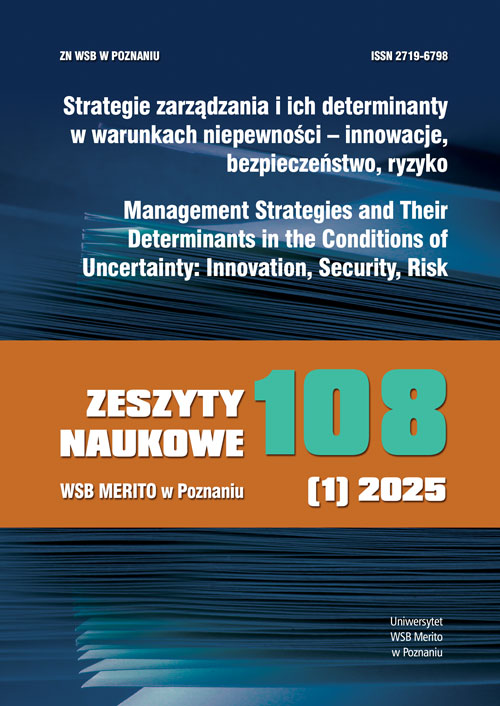Tom 108 Nr 1 (2025)
Strategie zarzadzania i ich determinanty w warunkach w niepewności – innowacje, bezpieczeństwo, ryzyko
Nie podlega dyskusji fakt, że współczesne przedsiębiorstwa i instytucje działają w niezwykle dynamicznym i nieprzewidywalnym środowisku, które stawia przed nimi szereg wyzwań. Globalizacja, szybki rozwój technologii, zmieniające się oczekiwania klientów oraz rosnąca konkurencja to tylko niektóre z głównych czynników wpływających na funkcjonowanie współczesnej gospodarki. Ponadto, kwestie związane z zrównoważonym rozwojem, bezpieczeństwem cybernetycznym oraz koniecznością innowacji wymuszają na organizacjach ciągłe dostosowywanie się do nowych realiów. W tym kontekście istotne jest zrozumienie głównych wyzwań, które kształtują przyszłość przedsiębiorstw i instytucji, oraz opracowanie skutecznych strategii radzenia sobie z nimi.
Prezentowane w opracowaniu artykuły wychodzą naprzeciw tym wyzwaniom skupiając się na:
- Adaptacji przedsiębiorstw do trudnych warunków, w tym zarządzaniu ryzykiem w sytuacji wojny oraz konieczności wprowadzania innowacyjnych rozwiązań, takich jak automatyzacja i transformacja cyfrowa
- Wpływie nowoczesnych platform sprzedażowych i sztucznej inteligencji na modele biznesowe, marketing i kulturę konsumpcji, które wymuszają elastyczność i innowacyjność w działaniu podmiotów rynkowych.
- Implementacji praktyk DevSecOps w środowiskach chmurowych dla infrastruktury krytycznej,
- Zarządzaniu ryzykiem w instytucjach finansowych oraz wczesnym ostrzeganiem przed zdarzeniami kryzysowi w systemie finansowym,
- Analizie i prognozowaniu długu publicznego.
- Roli wizerunku i strategii mikroekonomicznych w kontekście zdigitalizowanego rynku usług prawnych.
Chociaż wskazane opracowania stanowią jedynie fotografię rzeczywistości, wyniki analiz i wynikające z nich obserwacje i wnioski mogą być interesujące tak dla praktyków, studentów, jak i naukowców zainteresowanych wskazanymi obszarami.
Artykuły
Determinanty i prognoza długu publicznego w krajach Bałkanów Zachodnich
Uniwersytet WSB Merito w Poznaniu
ul. Powstańców Wielkopolskich 5
61-895 Poznań
e-mail: journals@poznan.merito.pl
Uniwersytet WSB Merito w Poznaniu / WSB Merito University
ul. Powstańców Wielkopolskich 5
61-895 Poznań
Copyright 2022 by Uniwersytet WSB Merito w Poznaniu / WSB Merito University
OJS Support and Customization by LIBCOM
Platform & Workfow by OJS/PKP

 Język Polski
Język Polski
 English
English

